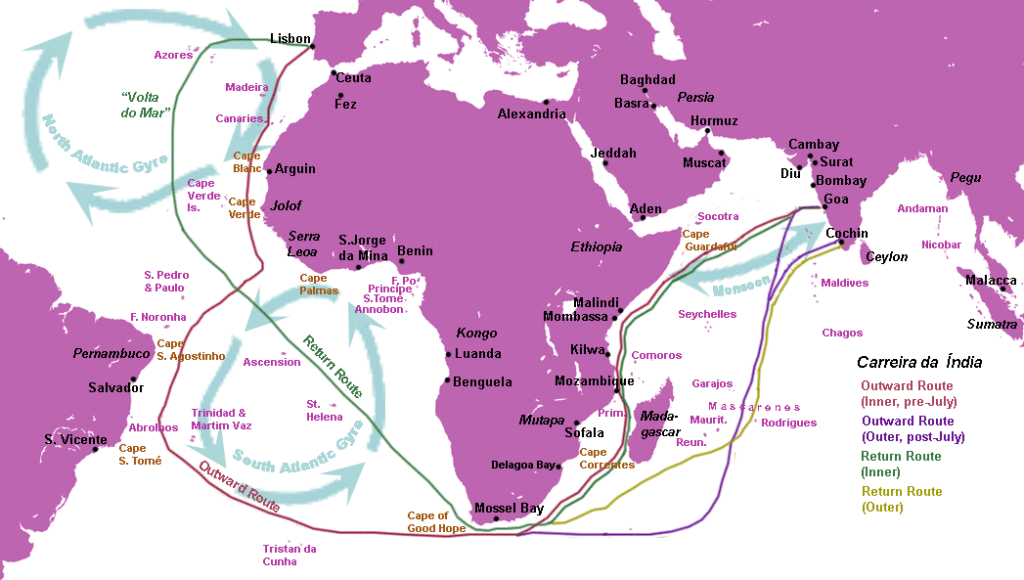Bartolomeu Dias and the Tip of Africa

In October 1486, King John II of Portugal charged Bartolomeu Dias, with finally finding the tip of Africa and the route into the Indian Ocean. Dias was to lead an expedition consisting of two caravels and a square-rigged cog carrying provisions for the expedition.
Dias recruited the best pilots and navigators he could find and set sail in July or August 1487. By Christmas Day, the little flotilla of ships had passed the previous southern limit of Portuguese exploration. They had gone further than any Europeans before them.
But the expedition was struggling against a south-west wind that blew them towards the shore and a steady current pushing them north. The square-rigged cog could not make headway, so Dias decided that it would moor, on the shore of what is today Namibia, and wait on the return of the rest of the expedition.
With just the two caravels, Dias pushed on south.Tacking back and forth against the wind, the ships crawled southwards. And then, after a few days of little progress, Dias did something extraordinary. He turned west.
The expedition sailed out into the empty ocean, directly away from land and at right angles to where they wanted to go. Two small caravels headed into the swell of the open Atlantic. There’s no record whether this was an inspired call by Dias and his navigators or a strategy worked out back in Portugal with John’s geographers.
The little expedition continued sailing south west for 13 days and a thousand miles. The temperature dropped precipitously. Then the winds changed and Dias turned east.
But even after days of running before the wind, there was still no sign of land. Finally, Dias turned north again. At the end of January, the lookout saw distant ridges. On 3 February 1488, the ships made land (today called Mossel Bay). Although they did not know it yet, the great wide loop they had sailed had carried them past the southern tip of Africa and into the Indian Ocean.
The expedition continued sailing, following the coast for two hundred miles further so Dias could be sure this was not another bay. By mid March, with supplies running out and the coast continuing to run north east, Dias was sure. He had sailed around the tip of Africa and opened up the Indian Ocean to the Portuguese.
Turning back, Dias spotted the Cape of Good Hope on his return journey. The voyage north was aided by the current and the prevailing winds but returning to their supply ship, only three of the nine men left to guard it were still alive. Burning the cog – it was no longer seaworthy – the surviving men transferred to Dias’ ships and set off for home, reaching Portugal in December 1488. Dias’ voyages ranks alongside Columbus’ discovery of America as the most important voyage of the Age of Discovery. The world was opening up and it was the Portuguese who opened it.
0 Comments